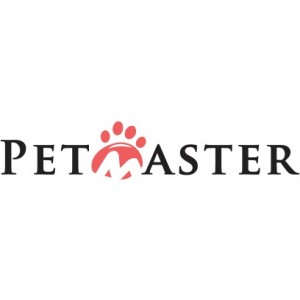Commercial Dog Food vs Home-made Diet For Dogs
Till this day, pet owners are still divided on several aspects of pet care. One of the most talked about aspects–food.
Is commercial food or homemade diet better for your dogs?
Despite the vast improvements of pet food manufacturing technology and expectations on pet welfare, the stigma attached to “commercial food” still lingers, unearthing associated descriptions from the past at its mention. However, categories of commercial dog food have expanded from just dry kibbles and canned food. The demands of wholesome diets for our fur friends introduced air-ried and freeze-ried foods.
COMMERCIAL DOG FOOD

Pet food regulators like the AAFCO (Association of American Feed Control Officials) have implemented strict minimal standards that pet food manufacturers have to adhere to. For a product to qualify as a "dog food", it must be nutritionally balanced in fat, protein and carbohydrates, as well as in essential vitamins and minerals. Dog food products that doesn't meet the minimum nutritional requirements has to be labelled as "dog treat" or "dog supplement".
THE MAKING OF DOG FOOD
Components of dog foods are delivered in bulk to manufacturing plants; these consist of raw ingredients (meats, fish, vegetables and grains), vitamins and minerals.
Dry Food Processing
1. Ingredients in dry dog food are ground to a floury consistency while still raw.
2. Ingredients are weighed on an industrial scale before mixing to ensure an even distribution in each kibble.
3. Liquid or fatty ingredients are added into the mixture to form a dough.
4. The dough enters an expander to be cooked under high pressure and temperatures.
5. The cooked dough is then cut into uniformed pieces (kibbles).
6. Each kibble is dried slowly to prevent undercooking and overcooking; undercooking can leave patches of moisture that could cause bacteria to breed, and overcooking can cause the kibble to be too hard.
7. Kibbles are cooled before packing to prevent condensation from forming inside the bag.
Wet Food Processing
1. Meats are ground then mixed to ensure even distribution of calories and nutrients.
2. Carefully proportioned ratios of vitamins and minerals are mixed thoroughly into the meat.
3. After the ingredients are combined, the mixture is heated through slowly.
4. Meats and starches will gelatinise during cooking; this increases palatability and easy digestion for your doggo.
5. The process produces a mousse-ike texture that can be turned into chunks for gravy or jelly to be added.
6. Canned food are then sterilised with high heat to kill off any remaining bacteria.*Some brands choose to form the meat mix into slices or chunks, then broil them for a more complex texture and flavour.
**Food is kept hot even during canning for a natural vacuum seal to form after the sealed can is cooled.
Besides ensuring that essential vitamins, minerals and animo acids are provided, most commercial brands also include information that allows dog owners to easily provide the right amount of nutrition for their pups. This includes recommended daily feeding quantity (based on your dog's age, weight, and activity level) and a guaranteed analysis of the product's nutritional content.
HOME-MADE DIET FOR DOGS

Some prefer to recognise the exact ingredients consumed by their beloved dogs. For those considering to make the switch from commercial food, know that once your doggo has been introduced to homemade food, it is difficult to will him back to a commercial food diet.
Most vets have cited that a dog's essential balanced diet consists of 40% protein, 50% vegetables, and 10% starch. You can easily find dog-afe foods for each category in the multitude of articles online. It is important to check your sources and make sure that the food offered is absent of contaminants (unsafe ingredients and spices), bacteria, or parasites (in raw foods) that can make your pup very ill.
The amount of nutrients provided is also crucial to your dog's health. The right quantity of food and nutrients for each dog is dependent on his age, weight, and level of activity. There are about 40 essential nutrients (including vitamins, minerals, and amino acids), each with a specific role important to the dog's bodily functions. A deficiency or excess in any of the nutrients will lead to diseases that can be fatal.
CONCLUSION
Commercial food provides ease and convenience in providing your dog the right amount of essential nutrients; Homemade food eliminates concerns over ingredients in your dog's diet, and can help combat food intolerance issues. Selecting the right diet for your doggo is highly dependent on his health's needs. But, before making transitional changes to his diet, always remember to consult your vet!
Tags: Dog Foods




